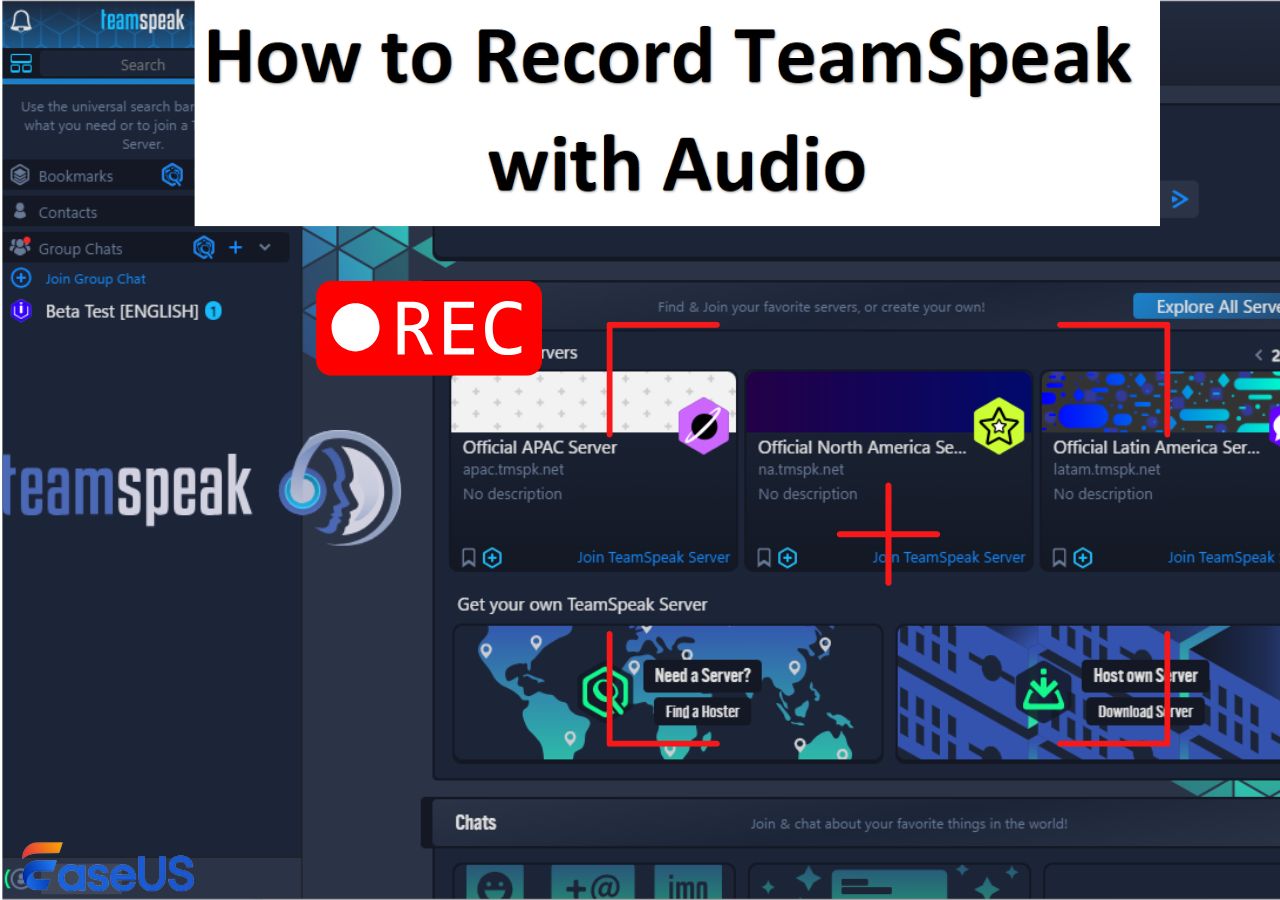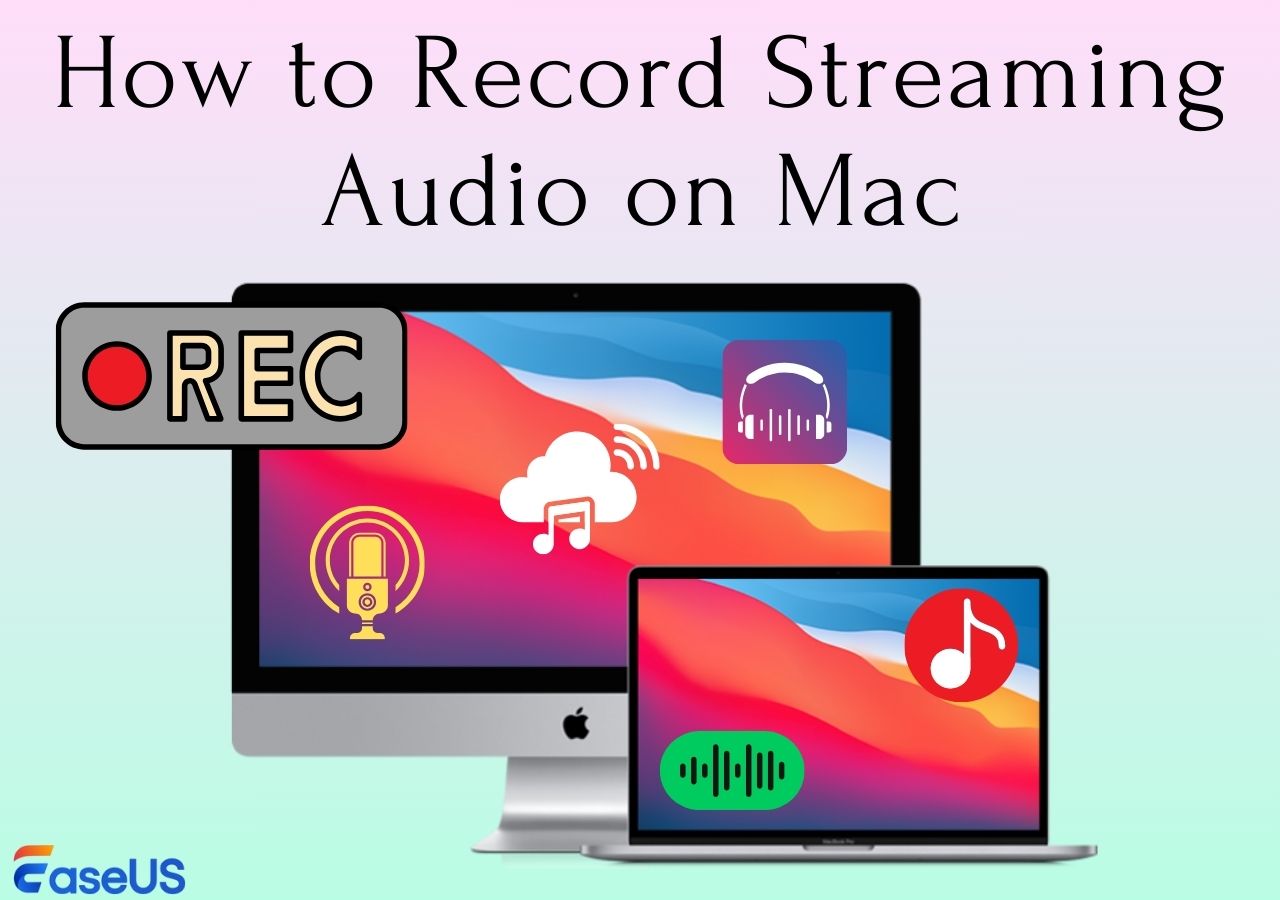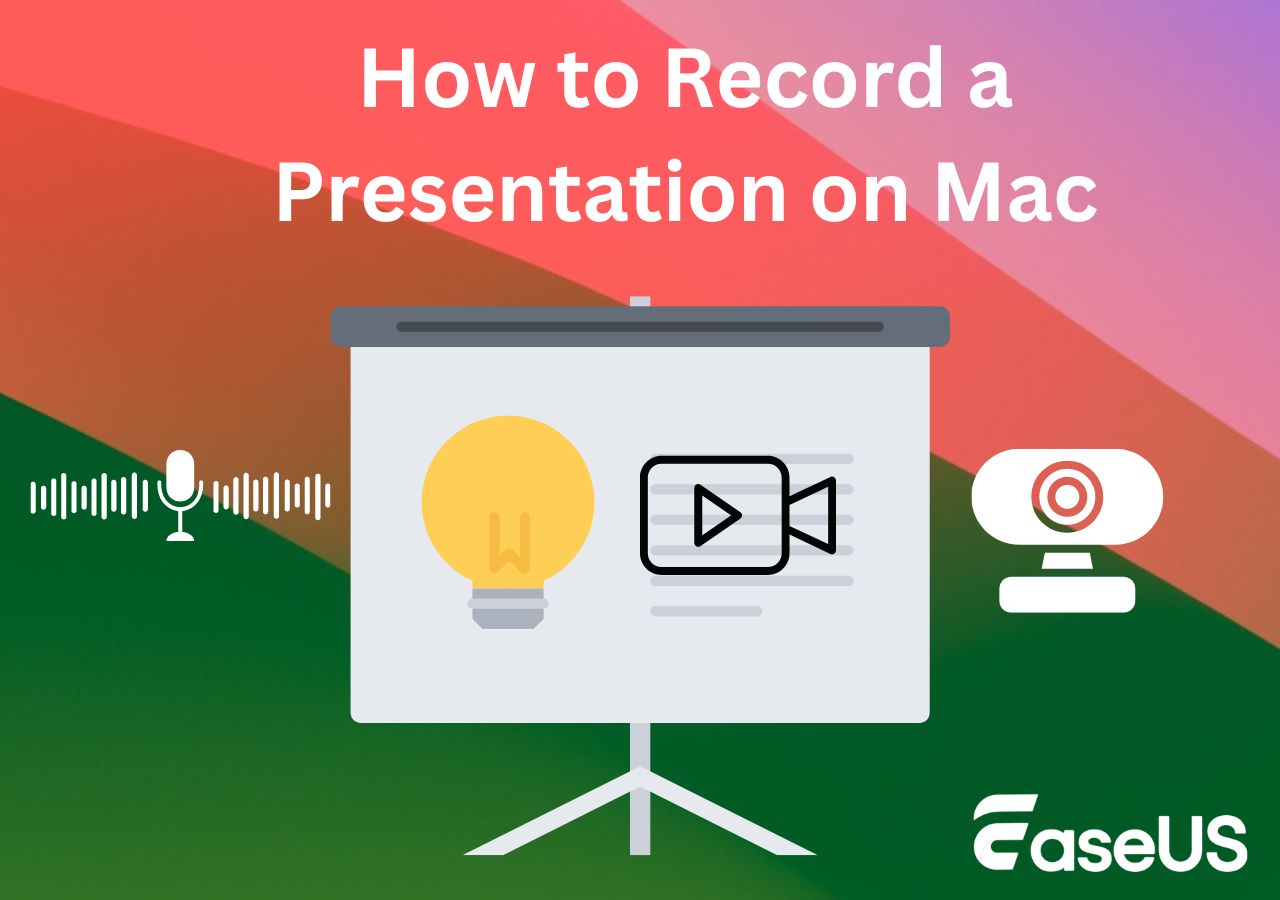-
![]()
Daisy
Daisy is the Senior editor of the writing team for EaseUS. She has been working in EaseUS for over ten years, starting from a technical writer to a team leader of the content group. As a professional author for over 10 years, she writes a lot to help people overcome their tech troubles.…Read full bio -
Jane is an experienced editor for EaseUS focused on tech blog writing. Familiar with all kinds of video editing and screen recording software on the market, she specializes in composing posts about recording and editing videos. All the topics she chooses …Read full bio
-
![]()
Alin
Alin is an experienced technical blog writing editor. She knows the information about screen recording software on the market, and is also familiar with data cloning and data backup software. She is expert in writing posts about these products, aiming at providing users with effective solutions.…Read full bio -
Jean is recognized as one of the most professional writers in EaseUS. She has kept improving her writing skills over the past 10 years and helped millions of her readers solve their tech problems on PC, Mac, and iOS devices.…Read full bio
-
![]()
Jerry
Jerry is a fan of science and technology, aiming to make readers' tech life easy and enjoyable. He loves exploring new technologies and writing technical how-to tips. All the topics he chooses aim to offer users more instructive information.…Read full bio -
![]()
Rel
Rel has always maintained a strong curiosity about the computer field and is committed to the research of the most efficient and practical computer problem solutions.…Read full bio -
![]()
Gemma
Gemma is member of EaseUS team and has been committed to creating valuable content in fields about file recovery, partition management, and data backup etc. for many years. She loves to help users solve various types of computer related issues.…Read full bio -
![]()
Shelly
"I hope my articles can help solve your technical problems. If you are interested in other articles, you can check the articles at the bottom of this page. Similarly, you can also check my Twitter to get additional help."…Read full bio
Page Table of Contents
0 Views |
0 min read
Whether you need to record high-quality audio for a podcast, a voice memo, or a sound bite, using a headphone as an input device is essential. This assists you in monitoring your audio, thus making adjustments along the way. However, macOS prevents direct system audio capture by default.
How to screen record audio on Mac with headphones? This guide gives you two reliable solutions: using a professional recorder like EaseUS RecExperts for an all-in-one setup, or configuring QuickTime Player with a virtual audio driver for a free, manual method.
Can You Record Audio with Headphones Plugged in Mac?
Yes, you can record audio with headphones plugged into your MacBook, MacBook Pro, and MacBook Air. Even this has become a common practice for various benefits, such as detecting issues and making real-time changes to remove background noise and distortion. You can ensure accuracy to achieve a professional audio recording setting. To record system audio on Mac, you need a tool capable of audio loopback:
- Free method: Use QuickTime Player + a virtual driver (BlackHole/Soundflower) and configure a Multi-Output Device.
- Easiest: Use EaseUS Mac Screen Recorder to capture internal audio and mic with no manual routing.
These setups overcome macOS limitations and allow stable, high-quality audio recording while wearing headphones.
How to Record Audio on Mac with Headphones
Suitable for general users, meeting recorders, tutorial creators, and podcast hosts who need stable, high-quality recordings.
EaseUS RecExperts for Mac offers the easiest way to record system audio and microphone on your Mac with headphones plugged in, without the need for virtual drivers and Multi-Output configuration. This all-in-one screen and audio recorder is designed to record high-resolution audio playback through headphone jack on your Mac.
Its interface is simple enough for beginners, yet it offers advanced options such as noise reduction, audio-only mode, scheduled recording, and multi-source capture. Even changing the aspects of your recordings, such as bitrate, sample rate, format, etc., is in your control.
Key Features
- No complex routing required
- Noise reduction & audio enhancement
- Capture live streams on Mac with ease
Steps on Recording Audio with Headphones Plugged in Mac using EaseUS Mac Screen Recorder:
Step 1. Run EaseUS RecExperts on your device and you will see two recording modes. You can choose "Full Screen"to record the whole screen or choose "Region" to select the recording area manually before recording.
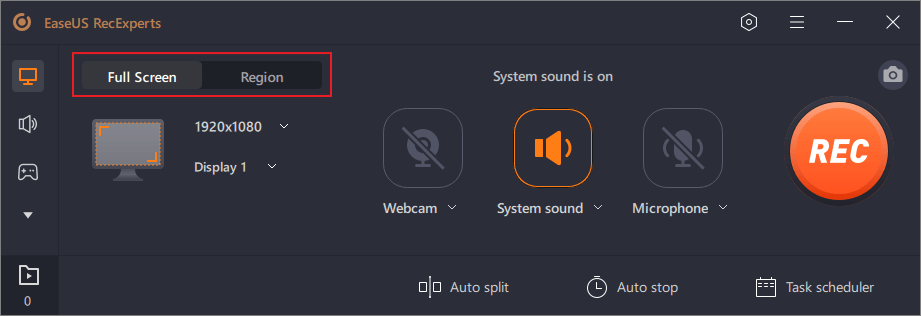
Step 2. After that, you can choose to record the webcam, system sound, microphone or record none of them as you like. You can also set auto split, auto recording with various functions on the interface.
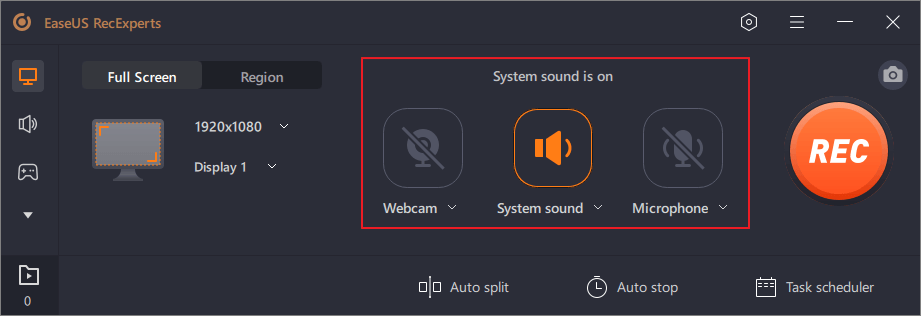
Step 3. Then, you can click the red "REC" button to start recording. Here will be a menu bar on your screen. To pause the recording, click on the white double vertical bar; to end the recording, click on the red square sign.
Step 4. After recording, you will be led to the list interface. Here you can view or edit your recordings. To start a new recording, just click on the "REC" button on the top of the interface.
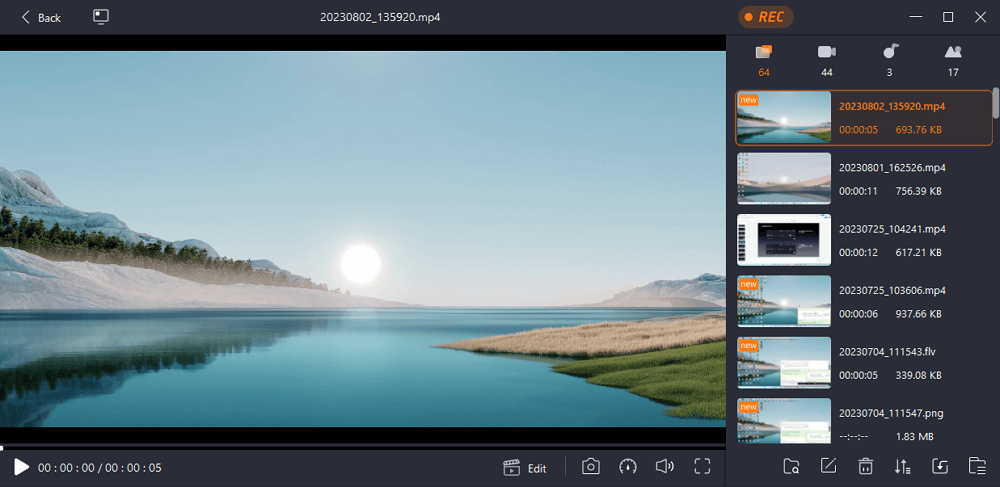
🚩Share this post with more people if you find it useful!
QuickTime Record Audio from Headphones
Suitable for users with high technical proficiency.
QuickTime Player is a simple built-in app for Mac users that allows you to record microphone sound. But it cannot record system audio on its own. When your headphones are plugged in, macOS routes sound exclusively to the headphones, leaving QuickTime with no system audio input to capture. However, it can assist you in recording audio with headphones plugged into your Mac using BlackHole or Loopback.
Then, by setting up the Multi-Output Device, you can:
- Listen and record simultaneously
- Record pure system audio
- Record a mix of system audio and microphone audio
Let's comply with the given steps on how to record audio from headphones on Mac using QuickTime:
Step 1. Install BlackHole 2ch and Create a Multi-Output Device in Audio MIDI Setup app. This method allows you to listen and record simultaneously. If you need to record system audio and microphone input, you also need to create an Aggregate Device.
Step 2. Plug your headphones into a USB port or headphone jack of your MacBook. Next, launch QuickTime Player and press "File" > "New Audio Recording" from the menu bar.
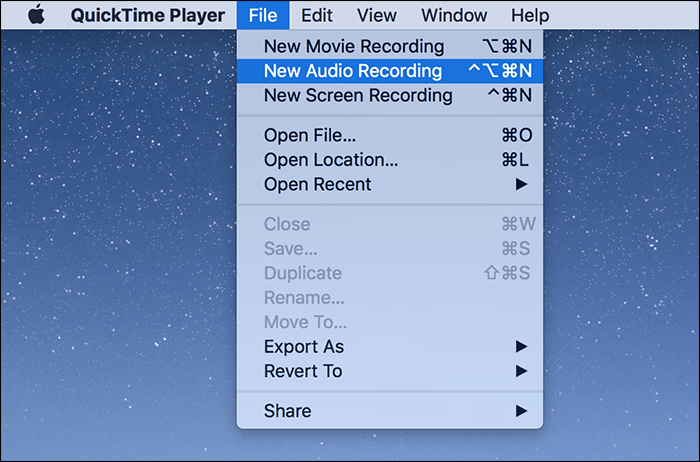
Step 3. Click the audio source drop-down box and select: BlackHole 2ch (system sound only) or Aggregate Device (system sound + microphone).
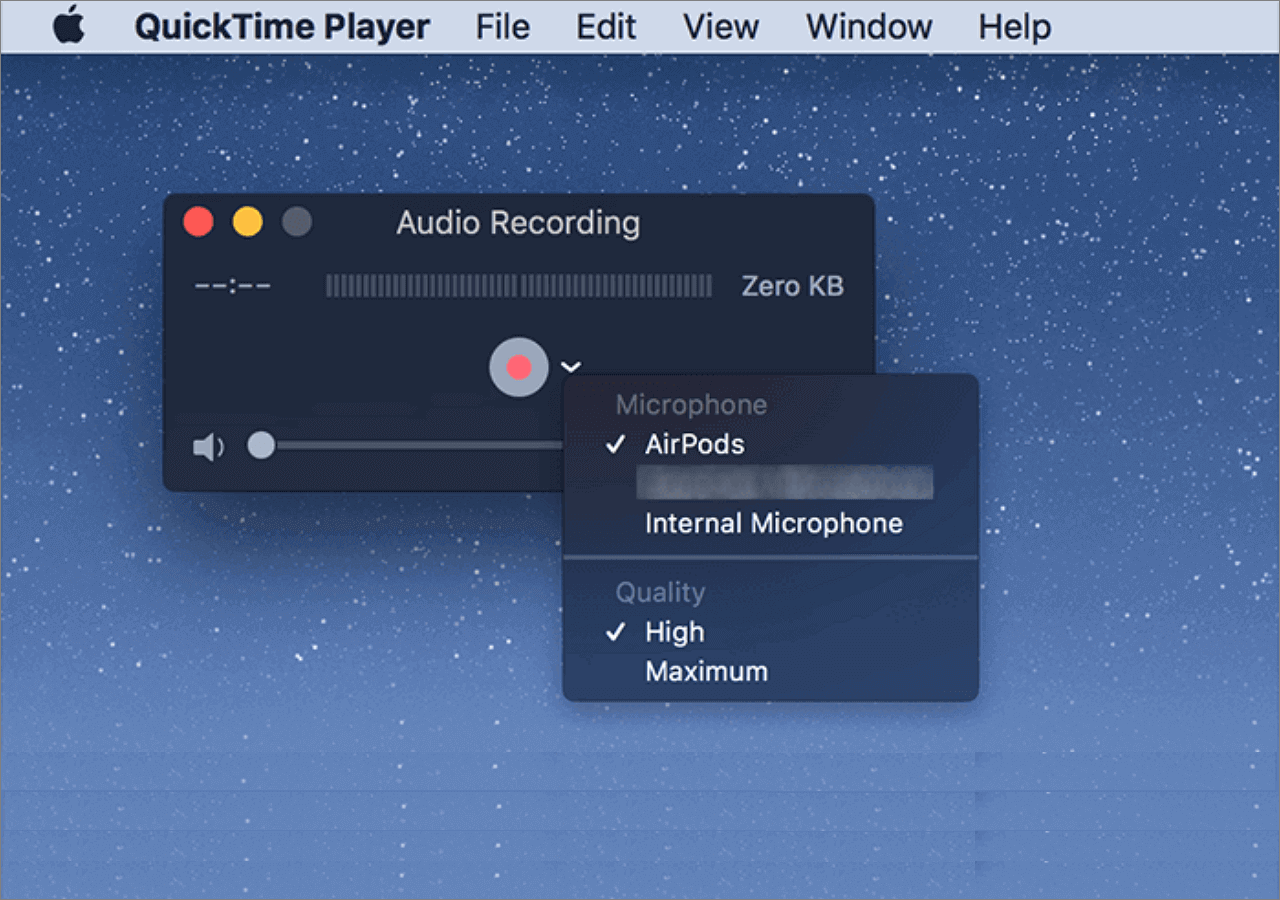
Step 4. After selecting the audio source, press the large record button to start the audio recording, and once done, hit the stop recording button.
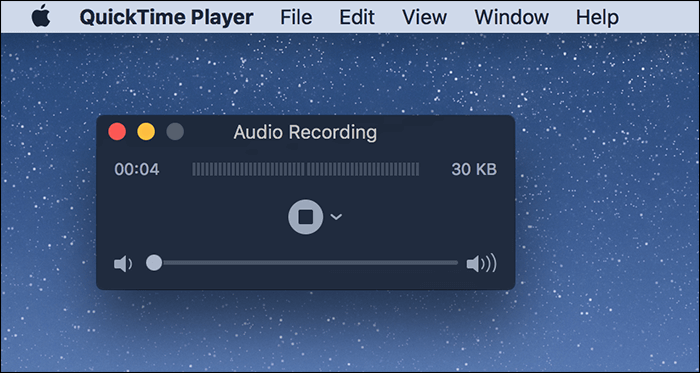
Step 5. Lastly, you can play the recording if needed. Otherwise, click "File" and choose "Save" to export the recording.
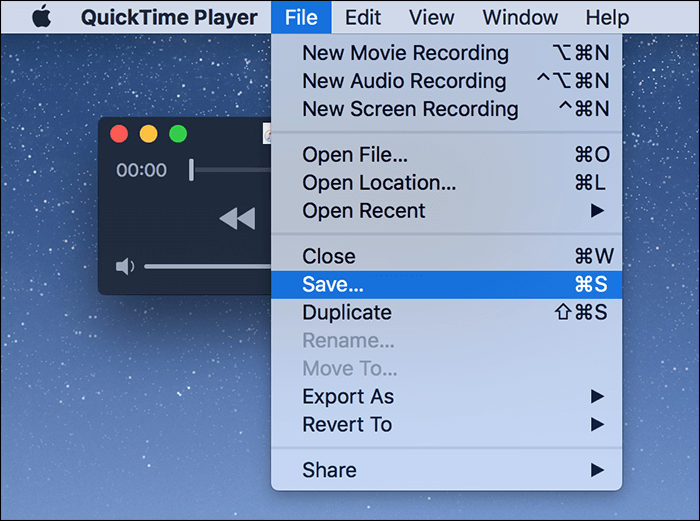
These steps work only if you have installed BlakHole on your Mac. This is a completely free solution, but it requires more manual configuration than using RecExperts.
Common Issues & Fixes to Record Audio on Mac with Headphones
Mac users encounter the most common problems when recording with headphones plugged in, focusing on input source recognition and system sound capture. Below are the most typical scenarios and feasible solutions.
1. Earphones Detected but No Input
Many headphones only provide audio output, and the Mac still cannot recognize the microphone input after plugging them in.
Solution: Use a TRRS headset with a built-in microphone, a USB microphone, or install a virtual sound card to record system audio.
2. Recording Volume Is Very Low or Mono
Inconsistent device sampling rates or unstable connections can result in only mono or very low input.
Solution: Align the sampling rate to 44.1/48 kHz in Audio MIDI Setup and check the headphone jack/adapter.
3. QuickTime Captures Screen but Not System Audio
macOS restricts QuickTime from recording system sounds, resulting in no built-in audio track in screen recordings.
Solution: Install a virtual driver such as BlackHole and select the appropriate virtual device in Sound > Output/Input. Alternatively, use RecExperts to record system sounds directly.
4. No Sound After Using a Virtual Driver (No Monitoring)
The virtual sound card takes over the output, preventing headphones from monitoring audio in real-time during recording.
Solution: Create a Multi-Output Device in Audio MIDI Setup, selecting BlackHole + Headphones.
5. Bluetooth Headsets Produce Noise or Delay
Bluetooth headphones automatically downgrade to low-bandwidth mode during recording, causing distortion and noticeable delay.
Solution: Use wired headphones or a separate microphone; use Bluetooth headphones only for monitoring, not for input.
6. Recorded Audio Is Blank or Only Background Noise
A common cause is that permissions are not enabled or the wrong input source is selected, resulting in the software having no valid audio source.
Solution: Enable microphone permissions in Privacy & Security and select the correct input device in the software. And close other apps that may consume audio (Chrome, Zoom, etc.).
Conclusion
Recording internal audio with headphones on Mac can be easy with suitable tools. While QuickTime + BlackHole requires configuration in the Audio MIDI Setup app, once configured, it can reliably capture system sounds or mix recordings, making it suitable for Mac users who prefer manual setup.
For a simpler solution, EaseUS RecExperts is a must-have. It can easily screen record audio on Mac with headphones plugged in.
Plus, share this post with others if you find it worth reading!
Record Audio with Headphones Plugged in Mac FAQs
Below are some frequently asked questions on how to record audio with headphones plugged into Mac:
1. Can you record audio while using headphones?
You can record audio with headphones, thus achieving clean and sound-quality recordings. It provides multiple benefits, such as noise-free recording, real-time monitoring, confidential voiceovers, and immersive recording experience.
2. Can the headphone port be used for audio on Mac?
The headphone port can be used for audio input and output on Mac since it is designed as a combination audio jack. It is also famous as a 3.5mm TRRS jack that can accept both microphone and headphone signals, making audio-related tasks easier.
3. How do I use my headphones as a mic on my Mac?
To use your headphone as a mic on your Mac:
Step 1. Navigate to the System Preferences by pressing the Apple logo from the top left side. Tap Line-in from Select a Device for Sound Input.
Step 2. Next, find the Audio Line-in port from the back of your Mac. and insert the 3.5mm plug headphone into the port (icon of two triangles connected by a circle).
Step 3. Launch Voice Memos on your Mac and click the Record button. Once done, hit the Finish recording button.
4. Can I use the headphone jack as an audio input?
Yes, you can easily use the headphone jack as an audio input connection. It can help you capture audio up to 20kHz frequency and 120dB dynamic range. It can accept signals from line-level equipment, microphones, or instruments.
EaseUS RecExperts

One-click to capture anything on screen!
No Time Limit, No watermark
Start Recording
